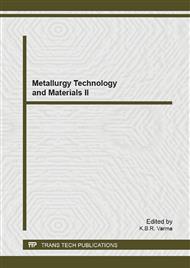p.91
p.96
p.100
p.104
p.108
p.112
p.116
p.120
p.124
Research on Optimization of the Electric Cylinder Buffer Made in Polyurethane
Abstract:
The buffer made with polyurethane is widely used in light industry, automotive industry and mechanical industry especially in the electric cylinder of small and medium sizes because of its compact structure, economics and process ability convenient. Firstly, the properties of nonlinear material and the constitutive relation of the polyurethane were analyzed, above on which the compression and shear tests of the polyurethane material were conducted to determine its physics parameters. Then the mechanical tests of polyurethane material were simulated in the finite element simulation software ABAQUS by input the parameters obtained from the mechanical tests. The parameters were proved to be correct by the testimony of the result of the simulation and the mechanical tests. Then buffers of different sizes with practical condition were simulated. During the simulation, this paper researched the maximum deceleration of the mass block in models with different sizes of polyurethane buffers. Lastly, the size of the buffer with minimum volume which is agreed with the request of the maximum deceleration of the mass block is obtained by data handling, above on which a database was built.
Info:
Periodical:
Pages:
108-111
Citation:
Online since:
September 2013
Authors:
Price:
Сopyright:
© 2013 Trans Tech Publications Ltd. All Rights Reserved
Share:
Citation:


